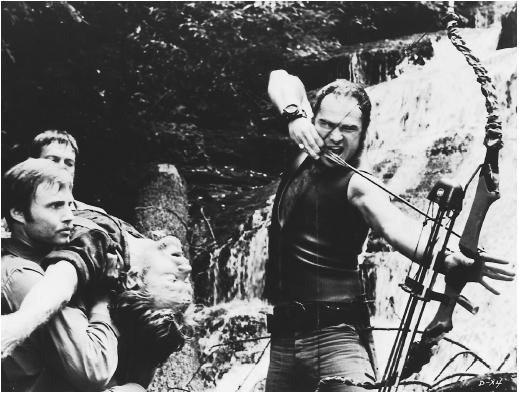http://www.fws.gov/mountain-prairie/species/mammals/grizzly/bear spray.pdf
Living with Grizzlies Fact Sheet No. 8
U.S. Fish and Wildlife Service
Mountain-Prairie Region, P.O. Box 25486
Lakewood, Colorado 80225
phone 303/236-7905, fax 303/236-3815
website: www.r6.fws.gov
Bear Spray vs. Bullets
Which offers better protection?
At first glance, this question may seem like a no-brainer. After all, aren’t guns made to kill, while pepper
spray (so-called “bear spray,” when it comes in big cans) does not? Unlike an attack by a human assailant,
who may be able to use your own weapon against you, that safety/survival argument for using pepper spray
doesn’t apply to a human-bear encounter... or does it?
When it comes to self defense against grizzly bears, the answer is not as obvious as it may seem. In fact,
experienced hunters are surprised to find that despite the use of firearms against a charging bear, they were
attacked and badly hurt. Evidence of human-bear encounters even suggests that shooting a bear can escalate
the seriousness of an attack, while encounters where firearms are not used are less likely to result in injury
or death of the human or the bear. While firearms can kill a bear, can a bullet kill quickly enough -- and can
the shooter be accurate enough -- to prevent a dangerous, even fatal, attack?
The question is not one of marksmanship or clear thinking in the face of a growling bear, for even a skilled
marksman with steady nerves may have a slim chance of deterring a bear attack with a gun. Law
enforcement agents for the U.S. Fish and Wildlife Service have experience that supports this reality --
based on their investigations of human-bear encounters since 1992, persons encountering grizzlies and
defending themselves with firearms suffer injury about 50% of the time. During the same period, persons
defending themselves with pepper spray escaped injury most of the time, and those that were injured
experienced shorter duration attacks and less severe injuries. Canadian bear biologist Dr. Stephen Herrero
reached similar conclusions based on his own research -- a person’s chance of incurring serious injury from
a charging grizzly doubles when bullets are fired versus when bear spray is used.
Awareness of bear behavior is the key to mitigating potential danger. Detecting signs of a bear and avoiding
interaction, or understanding defensive bear behaviors, like bluff charges, are the best ways of escaping
injury. The Service supports the pepper spray policy of the Interagency Grizzly Bear Committee, which
states that bear spray is not a substitute for following proper bear avoidance safety techniques, and that bear
spray should be used as a deterrent only in an aggressive or attacking confrontation with a bear.
Like seatbelts, bear spray saves lives. But just as seatbelts don’t make driving off a bridge safe, bear spray
is not a shield against deliberately seeking out or attracting a grizzly bear. No deterrent is 100% effective,
but compared to all others, including firearms, proper use of bear spray has proven to be the best method for
fending off threatening and attacking bears, and for preventing injury to the person and animal involved.
Because the grizzly bear is federally protected in the Lower 48 States as a threatened species, it is a violation of the
Endangered Species Act (ESA) to shoot one, except in self defense and defense of others during an imminent
attack. Penalties under the ESA include up to 6 months in prison and a $100,000 fine. Additional penalties may
also apply to violations of state law. For more information about bear spray and its effectiveness, see:
http://www.fs.fed.us/r1/wildlife/igbc
- N

